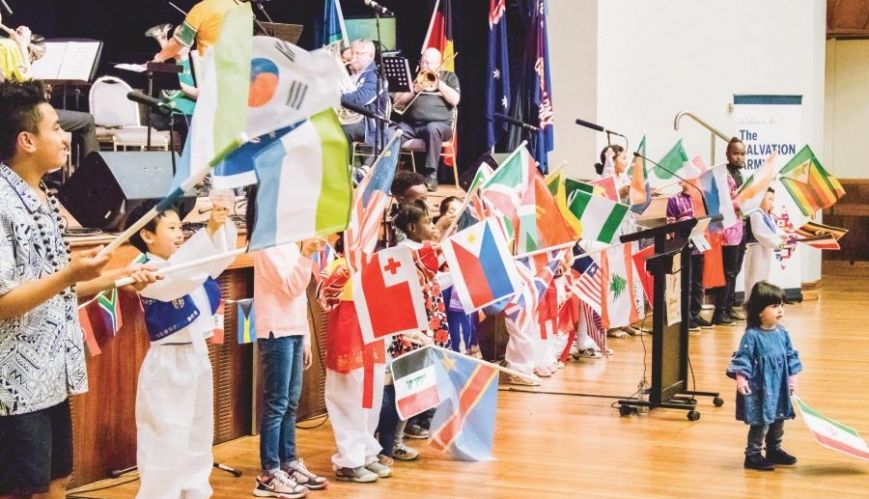A multicultural question yet to be answered

A multicultural question yet to be answered
12 August 2020
More than 500 people took part in The Salvation Army's 'The Gathering' conference in Sydney in 2018. Photo: Carolyn Hide
“What does a multicultural Salvation Army in Australia look like?” This question was put to me some time ago. I didn’t have an answer at the time, and my questioner did not pursue the matter.
According to the 2016 National Church Life Survey, The Salvation Army is the second ‘most white’ church denomination in Australia, after the Brethren. It indicated a profile incompatible with the real trend and composition of the wider community.
However, a casual survey of the current make-up of our congregations is encouraging. There are increasing numbers of different people groups now joining in our worship and activities across the nation. In the rank of Salvation Army officers, there are people from different cultural and linguistic backgrounds – African, Chinese, Farsi, Indian, Korean, Vietnamese, to name a few – taking up appointments across the depth and breadth sections of our ministry. These people are making the Gospel relevant to their different cultural understandings.
There are obvious differing expressions of corps multicultural ministry. At Auburn Corps in Sydney, people from all nations are welcomed under one roof, using English as a common language for worship. There are also many other stand-alone corps with monolingual congregations.
Other corps have separate congregations as an extension of their ministry, using the prime language of the specific cultural group in their worship. Languages used in worship include Cantonese, Mandarin, Farsi, Korean, Nepalese and several African languages.
While this indicates a movement in the right direction, in many places, congregations are yet to reflect the actual demographic profile of the communities in which the corps is located geographically and culturally. The reason for this mismatch, I believe, is that growth of various ethnic groups is mainly organic (this is definitely good in itself), rather than a result of a deliberate mission endeavour that is embraced by the whole movement.
It is paramount for all of us to acknowledge that there are very few, if any, communities in Australia that are truly monocultural. Whether English-speaking or not, all communities are inherently ‘multicultural’. Logically, it follows that all ministry needs to be technically multicultural.
There ought not be a distinction that marks some ministries as mainstream and others as ‘multicultural’. There is a problem when non-English-speaking projects and ministries are consistently regarded as some sort of special case. We rejoice in what is achieved but accept the status quo of this area being low priority – a supplement to our core mission.
Over the years, the notion of a multicultural Army has been questioned by some Salvationists, sometimes loudly. The argument is mainly over the need for separate congregations. The principle endorsed is that all should be encouraged to join in one worship – in English, of course.
The growth of multicultural ministry must not rely only on its ‘natural’ (read unplanned) development. Its importance demands a significant change of mindset across our personnel, as well as within our strategic thinking about mission.
Multicultural ministry is not done because of government legislation requirements; we do it because “God so loved the world” and offers a boundary-less salvation!
The Salvation Army proclaims, ‘One Army, One Mission, One Message’, but never has it been ‘One Language’.
A successful formation of a multicultural ministry requires vision, strategy and commitment. Vision denotes a desire to see it accomplished. Without such, there is no need to go any further. Vision also enables a transformation in attitude, mindset and faith.
Strategy is the planning for its realisation, while commitment shows the will of leadership to make it happen, which will then result in support with vital provision.
So, “What does a multicultural Salvation Army in Australia look like?” Behind the question, there is a tacit admission that organisationally, it does not exist.
I welcomed the challenge of the questioner and had hoped that action would be forthcoming. However, the person made no follow-up. Was an answer not expected? Was it too hard? Was the mission vision lacking? In the end, the purpose of the question seems immaterial to the mission. We are called to see the challenge and to respond for the sake of the Kingdom of God.
If we look through the eyes of faith embodied in works, we can realise the answer to the question.
What will a multicultural Salvation Army look like?